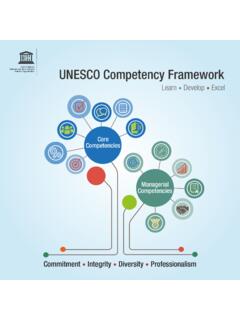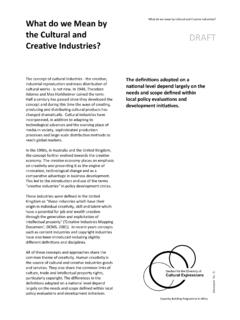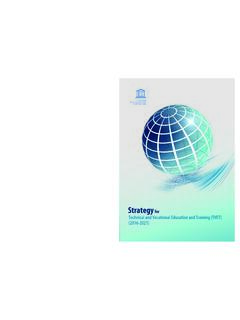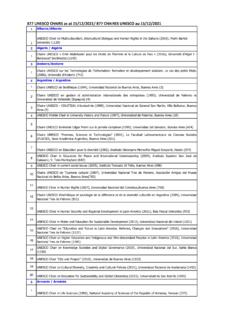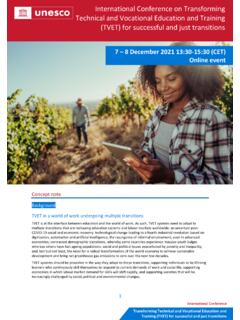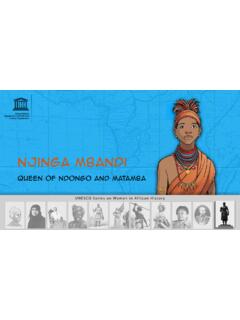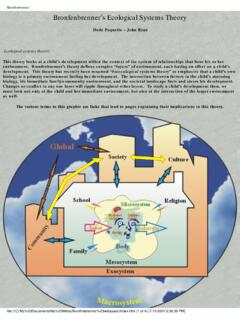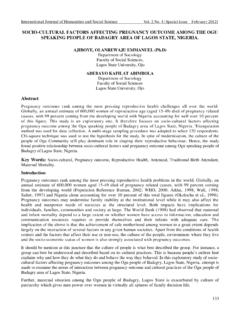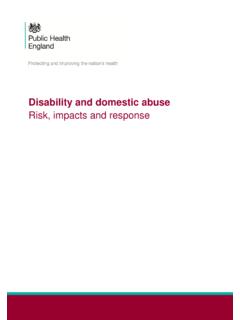Transcription of Inclusive Education 1 - UNESCO
1 Inclusive Education 1. Table of Contents Acknowledgements iii Executive Summary iv List of Abbreviations v List of Tables vi List of Figures vi Introduction: SDG4 and Inclusive Education 1. Methodology 3. Distribution by Country 5. Inclusion Education Policies across Countries 8. Brunei Darussalam 9. Indonesia 10. Malaysia 11. Philippines 12. Timor Leste 13. Discussion 14. Facility 15. Indonesia 15. Malaysia 16. Philippines 16. Timur-Leste 17. Teachers 18. Brunei 18. Indonesia 20. Malaysia 21. Philippines 21. Parents 24. Indonesia 24. Malaysia 24.
2 Philippines 24. Empirical Findings 25. Online Survey across Countries 25. Inclusivity across Thematic Areas 26. Open Ended Online Survey across Countries 30. Inclusive Education i Challenges in Inclusion Implementation and Post COVID-19 Challenges 31. Recommendations 32. Conclusion 34. References 34. Appendices 38. Appendix 1: Questionnaire on Alignment of National Policy with SDG 4 ( Inclusive Education ) 38. Appendix 2: Interview questions 44. Appendix 3: Open-Ended Responses Related to Inclusive . 45. Inclusive Education ii Acknowledgements This Sub- Education Policy Review Report on Inclusive Education would not been possible without the kind and continuous support from the UNESCO Jakarta Office.
3 In the preparation of this report, we are highly indebted to the Education Director Generals, National Consultants, Technical Directors, Education Specialists, Policy Experts as well as other educational stakeholders from all the five cluster countries; Brunei, Indonesia, Malaysia, Philippines, and Timor-Leste who were involved in data collection procedures in all five thematic areas. It is impossible to mention them here by name, but this report would not been possible without their cooperation and participation. I would also like to express my special gratitude and thanks to the Universiti Kebangsaan Malaysia team coordinated and led by Prof.
4 Dr. Mohd Nizam Mohd Said, together with Prof. Dr. Kamisah Osman, Prof. Dr. Lilia Halim, Dr. Lee Tien Tien and Mr. Azizi Alias for their continuous, conscientious and effective work through the whole period of this project. Their personal involvement and dedication were a precondition for completing this report in expected time and shape. Thank you very much. Dr. Mee Young Choi Head of Education UNESCO Jakarta. Inclusive Education iii Executive Summary Inclusion highlights opportunities for an equal involvement of individuals with disabilities (physical, social, and emotional) when possible into typical Education , but leaves accessible the probability of individual selections and possibilities for special aid and accommodations for persons who need it.
5 This review was initiated by UNESCO to inform the ongoing discourse about Inclusive Education within Malaysia, Indonesia, Brunei, Philippine and Timur-Leste. Sustainable Development Goal 4 (SDG 4). reinforces the importance of Inclusive Education which adheres nations to adopt the framework of action in providing inclusion and equity through Education of children with perceived differences. The review contributes to the body of literature on Inclusive Education by synthesizing policy recommendations and evaluations and identifying contradictions and overlaps in those policies.
6 This review draws upon UNESCO reports pertaining to Inclusive Education policies and initiatives. In addition, a systematic review of empirical studies on Inclusive Education policy (2010-2020) identified from related and major databases (Eric) is conducted. Both the UNSECO reports and empirical studies are analyzed based on the SDG4 and its targets pertaining to inclusion policy. As UNESCO is working towards the 2030 agenda for sustainable development, it may be opportune to reflect on some of the issues that emerge from this review, including an appropriate mix of short-term and long-term interventions to address inclusion without compromising quality.
7 Perhaps the greatest challenge would be the introduction of a comprehensive evaluation and feedback system that would continuously monitor the ef cacy of the inclusion-based training programmes and respond adequately to the emergent yet unmet needs of all teachers. The findings of this analysis identify the key themes important for policy implementation in Inclusion Education are facilities, teacher's competency, and parents' attitude. Nevertheless, as indicated by the empirical findings, all five cluster countries, experienced challenges in implementing the policies that might hinder the acceleration in meeting SDG4 in relation to quality.
8 Common challenges revolve around mainly on the teachers' perspective, skills, techniques and infrastructures in teaching and accommodating students with special needs. However, parents as a relevant stakeholder should be able to socialize in advance about Inclusive Education before the system is implemented so parents understand the usefulness of Inclusive Education for the development of their children. Despite this, the role and policies regarding parents in inclusion Education not getting much attention and created a gap in this review.
9 That is why parental awareness was among one of the critical factors which could create wide opportunities for students with special needs to succeed not only at school level, but also at national and international levels. As a conclusion, inclusion policies are put in place by all five countries, and it meets so some extent, the targets of SDG 4. Nevertheless, academic studies have highlighted aspects of the policies and its initiatives that could be continuously improved. As such, implementers of Inclusive Education need not only to execute programs that focus on children with special needs but also to give emphasis on promoting Inclusive values in the school community through a partnership with the peers of children with special needs.
10 To sum up, the inclusion of students with disability in Education context is not a one-man work. It needs a collaborative effort among the policy makers, middle management and the teachers, not to mention the parents of the students should also disseminate the same concept of inclusion. Inclusive Education iv List of Abbreviations EAHCA Education of All Handicapped Children Act EHAA Education of the Handicapped Act Amendments DSSE Directorate of Special School Education IDEA Individuals with Disabilities Education Act Amendments IIC Inclusive Indonesian Classrooms IE Inclusive Education IEP Inclusive Education Programme KWS Key Word Signing MOE Ministry of Education MORA Ministry of Religious Affairs NED National Education Department NGOs Nongovernment Organizations OHCHR Office of the United Nations High

